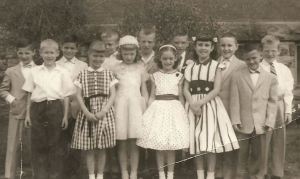Watching Donald Trump play Sink or Swim is fun for me. He has told so many lies, abused so many women, created so many racist sycophants, that to me, he deserves to drown. However, as of today, he has managed to hire attorneys who will never get paid and who propose specious theories to politically and financially prejudiced judges, that to me, suggests he might just swim.
Mammon is a concept that appears in our Bible. Mammon appears in Edmund Spencer’s “Fairie Queene” poem. Mammon appears to be the emblem for the collective greed of all humans who have occupied this earth, who presently do occupy this earth and, if Donald Trump or anyone like him, is ever in control of human destiny, will occupy this earth, the solar system, every universe and every reality of which human beings are now aware.
That is the extent to which human mendacity has created a wicked Tower of Babel from which we can never reach God, if we define God as the loving creator of all we have known, do know and will know.
Mammon is Greed; human greed; childish, selfish greed.
Greed controls our lives. We like to think that a comfortable retirement is the end goal of having lived an admirable life. But we still fear death.
That fear of death is driving force behind all we do, all we know and is behind all we are in spirit.
Jesus Christ or the tradition a Jewish agitator created in the political state that the Romans created, tells us all we need to know about escaping from death. From him or from the stories told by people who knew him, we learn that we cannot serve two masters – our loving creator versus our common greed.
Our dilemma is that we have created a system which attempts to do both. Call that system the Anti-Christ. We have taken literature from a unique religious tradition and transformed it into a new, human-made religion which attests to the idea that a book containing that literature, was in fact written by the loving creator and contains no topic that could ever be discussed in any form without resulting in what we fear most – Death.
Today, much of the world celebrates the myth of a human being who escaped Death. Many of the celebrants firmly believe that whatever they themselves perceive to exist in the Bible, gives then the divine authority to represent that Creator’s will on earth.
That perception has resulted in Mammon becoming the force that drives our human spiritual, political and personal lives. Mammon gives us the imagined right to love things and to use other human beings, even to the point of murder, for our greedy needs.
Under Mammon’s authority that Mammon grants to states, entire countries now have the authority to commit the genocide of entire human communities. Under Mammon’s authority, humans have built an electronic Tower of Babel that may never reach the level of divine wisdom since it allows humans to murder to promote human Greed.
How much is an Internet platform worth? Only Mammon knows.
That ends my Easter blog for today. As the Christ figure was heard to say to his understanding of God, as Mammon was orchestrating Christ’s own death by Roman Crucifixion, “May thy will, not my will be done.”
May we have the wisdom to recognize the will of God for his creation and to then do the will of that loving creator.
Amen




